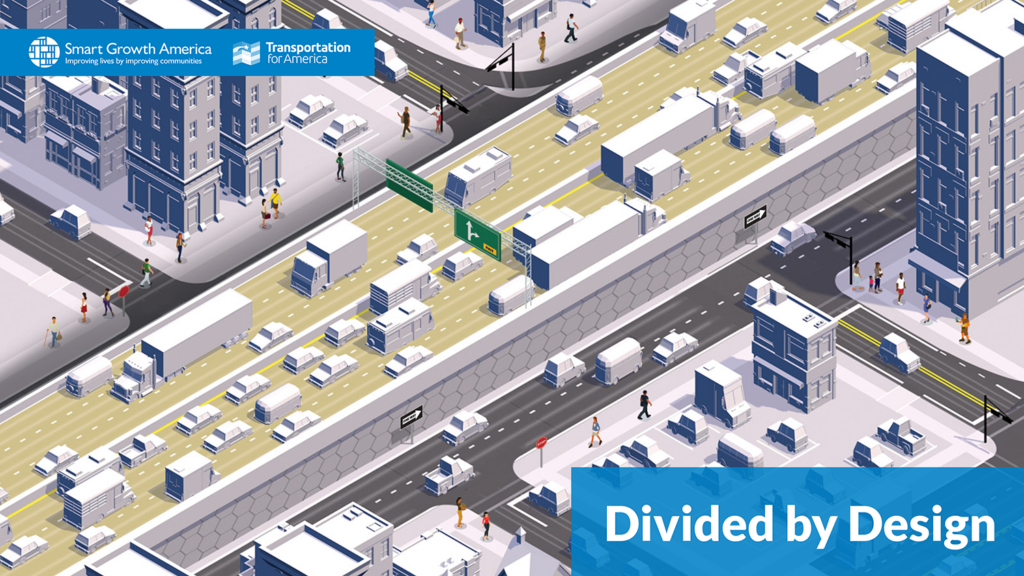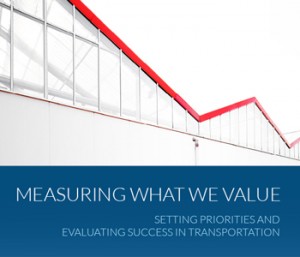
Using performance measurement to chase the right goal: Performance measures for members, part III.
If states and metro areas merely take up conventional measures without question, they may move in the wrong direction toward the wrong outcomes in the end. Instead, start from your ideal goal and work backwards to choose the appropriate measure to get you there.
This is the third post in a series on performance measures by Beth Osborne, T4America Senior Policy Advisor. Read the rest of the series anddive into a high-level overview of the concept, find out how and why you should go beyond the federal requirements, and learn how to demonstrate to the public that their dollars are being used wisely. -Ed.
What do you mean “conventional” measures? What sort of commonly accepted measures can send us in the wrong direction?

Beth Osborne, T4America
A fantastic, timely example can be seen in the latest release of the oft-cited but flawed Texas Transportation Institute’s (TTI) Urban Mobility Report which purports to rank metro areas by congestion, but is a case study in how a conventional, yet flawed, measure can lead you in the wrong direction.
There are numerous issues with TTI’s measure of congestion and we don’t cover them all here. Read our detailed public critique of the TTI report on the blog. -Ed.
When actual drivers talk about congestion, they tend to mean one of two things: bumper-to-bumper traffic or unpredictability. The latter really makes commuting a hassle — the lack of certainty about just how long today’s commute may take, with no way to adequately plan for it. (“Do I know how much time I need to allow today so I’m not late for work?”) It turns out that commuters understand that traffic will slow during rush hour, just like they know they will wait for a table at a popular restaurant on Saturday night.
TTI’s travel time index identifies congestion as any delay compared to the speed of traffic when the road is essentially empty. In other words, if people travel at 65 miles-per-hour on a particular highway where there is no traffic, any time the speed drops is considered delay, even if a slowdown to 55 mph is simply down to the posted speed limit. Yet, if you knew that you could travel at a reliable 55 mph each day for a rush hour commute (or 45 mph or 35 mph, even), wouldn’t you appreciate that predictability?
Most delay measures also only consider the experience of those driving. When the TTI report speaks of the experience of commuters universally, they’re actually only talking about driving, leaving out millions of others who commute each day by other methods.
Why is that distinction important? Let’s say the roadways are equally congested in two cities. In one city only half of the commuters experience it because they commute by transit, bike, foot or opt out entirely by telecommuting. In the other city, almost every commuter is traveling by car and is stuck in traffic each day. Do these two cities have the same congestion problem? According to the way TTI measures it, yes they do.
This is precisely how the wrong measure can put you on a path to the wrong outcome.
By defining and measuring congestion as only the change in speed at rush hour compared to the middle of the night and ignoring all other commuters, the “solution” becomes as limited as it is expensive: build enough roads and lanes so commuters in cars can drive as fast as they want — even above the speed limit — at all times of day no matter how many vehicles are on the road.
That narrow focus also means the community will be missing ways to encourage shorter trips, commuting by other less costly modes, and opting out of commuting entirely. If the community has economic development goals of attracting the young talent that is increasingly looking to locate in places with a wide range of transportation options, using a measure that focuses solely on driver delay will run at cross-purposes to those (and other) goals.
So how can we make sure we’re measuring congestion in a more beneficial way; in a way that reflects our residents’ concerns?
First, listen to your residents and stakeholders explain what it is about congestion that frustrates them. Understanding the source of their frustration will ensure your community is tracking the real problem.
Second, think about the point of view of all of your residents — roadway congestion may not be a frustration for all commuters. This means getting a more accurate picture of who is actually experiencing congestion day-to-day. After all, one way to address congestion is to remove drivers from the road, through carpooling, telecommuting, alternative work hours, helping people live closer to work or supplying affordable and convenient transportation options. Many of these solutions are cheaper than building more road capacity.
Congestion is not the only area where states and metro areas attempting to measure performance can mess up. One smart way to avoid these mistakes is to think deeply about the preferred, ideal outcome you’re seeking. Is it free flow conditions on every road at all times of day? Is it giving your commuters a predictable commute? Is it giving the highest possible number of people access to jobs within a 45-minute commute? Identify the end goal and find a measure that leads toward that goal.
We have more information about ways to do this in our report, Measuring What We Value. And let us know if we can help you explore these issues more deeply.




